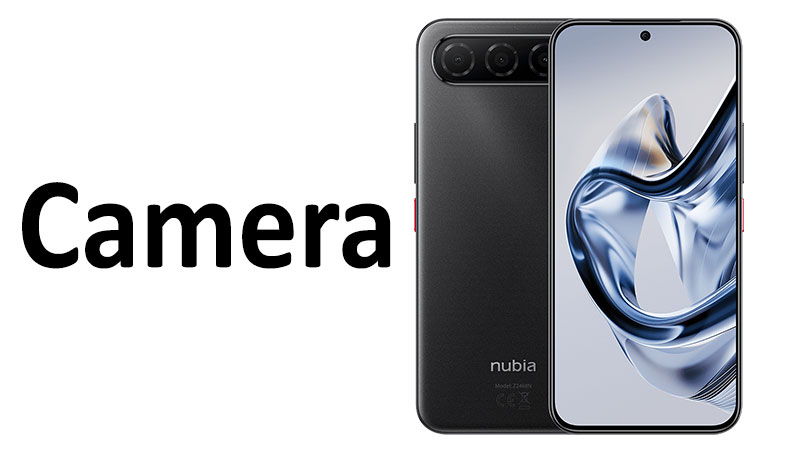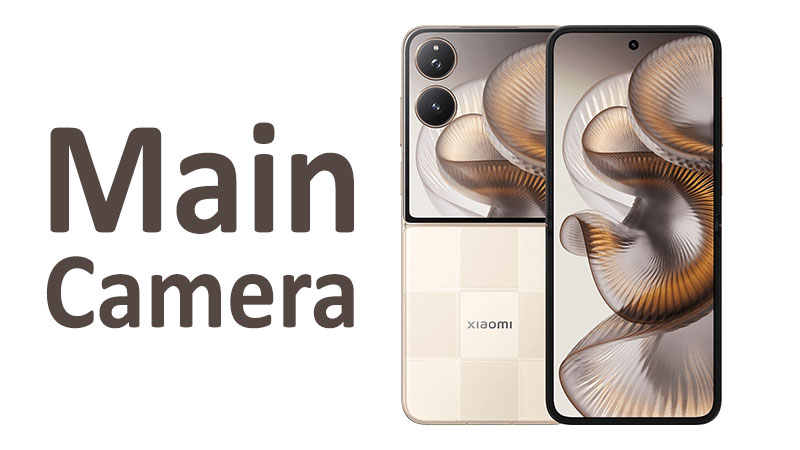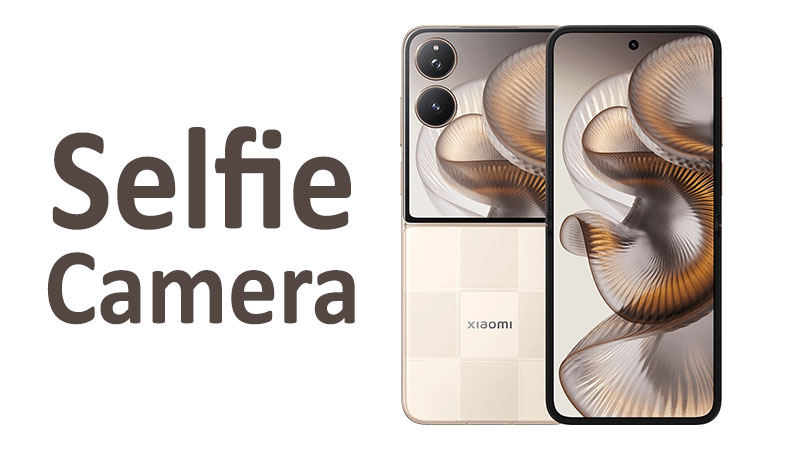The ZTE nubia Air Camera system positions itself as a strong performer in the highly competitive budget market. A smartphone’s camera is often the single most important factor for many consumers today. ZTE designed the nubia Air to deliver high-resolution images without carrying a flagship price tag. This detailed review examines every core component of its dual rear camera setup. We will closely analyze the powerful 50 megapixel main sensor. We also investigate the implications of its modest video and supporting lenses. Understanding these essential specifications is vital for any consumer considering a purchase. This comprehensive guide evaluates the core hardware, expected software performance, and overall user experience. We will determine if the ZTE nubia Air provides genuine photographic value for your money.
Rear Camera System: The Dual Camera Architecture
The ZTE nubia Air features a streamlined dual rear camera configuration. This arrangement focuses resources heavily on a single primary lens. The system is built around a high-resolution 50 megapixel wide sensor. It also includes a secondary 2 megapixel depth sensor. This second sensor assists the main camera with specific effects. The phone also includes an auxiliary lens component. This complete setup targets reliable performance for everyday photography needs. This architecture proves the phone prioritizes core image quality over maximum lens versatility.
The Powerhouse: 50 MP Primary Sensor
The primary camera on the ZTE nubia Air is a high-resolution 50 megapixel wide sensor. This lens forms the backbone of the entire photographic experience immediately. It uses a relatively fast f/1.6 aperture. This is a crucial detail for enhancing light capture. This main lens captures all general-purpose photography and high-detail images. The sensor size is not specified but its high resolution suggests modern pixel technologies. This powerful main sensor promises excellent photographic detail in good lighting.
Aperture and Low Light Implications
The main lens features a very wide f/1.6 aperture. This fast opening allows a significant amount of light to reach the sensor quickly. The large aperture is key for capturing bright, clear images in dim conditions. It is an impressive specification for a phone in this budget class. This aperture is also instrumental in producing a naturally shallow depth of field. This helps subjects stand out cleanly from their backgrounds. The f/1.6 aperture significantly boosts the low-light potential of the ZTE nubia Air camera. It makes the camera a compelling choice for night-time photography fans.
Focusing Technology: Phase Detection Autofocus
The primary lens utilizes Phase Detection Autofocus, or PDAF. PDAF is a standard technology in modern smartphone cameras. It provides quick and highly reliable focusing speeds. This technology is superior to older, contrast-based focusing methods. PDAF ensures subjects remain sharp and in focus rapidly, even when they move slightly. Fast focus acquisition is essential for capturing fleeting moments accurately. The inclusion of PDAF confirms a commitment to a snappy user experience. The ZTE nubia Air offers dependable focusing performance for daily use.
Understanding Pixel Binning
The 50 megapixel sensor often uses a technique called pixel binning. This process combines four adjacent pixels into a single, much larger “super pixel.” This results in a final image resolution of 12.5 megapixels. This technique is not a degradation of quality. Instead, it significantly improves light sensitivity and reduces digital noise. The 50MP resolution only serves to provide superior 12.5MP images in most automatic modes. Users can usually switch to the full 50MP mode for maximum detail in bright, perfect conditions.
The Supporting Cast: Depth and Auxiliary Lenses
The ZTE nubia Air includes two secondary elements in its rear camera module. These components are the 2 megapixel depth sensor and an auxiliary lens. These do not capture independent, usable photographs. Their primary function is to gather data that enhances the main 50MP camera’s output.
The 2MP Depth Sensor Explained
The 2 megapixel lens is a dedicated depth sensor. Its sole purpose is to measure distance between objects in the scene. This data creates a highly accurate depth map of the image. The camera software uses this map to simulate professional background blur. This simulated blur is often called the bokeh effect or portrait mode. The low 2MP resolution is sufficient for this specific task. However, it is fundamentally a functional sensor, not an imaging one.
The Role of the Auxiliary Lens
The term “auxiliary lens” often describes a component with a niche, non-photographic function. This third element may include a light sensor for color calibration. It might also be a specialized monochrome sensor for enhancing contrast. Sometimes, it is primarily a stylistic inclusion for aesthetic balance. For the ZTE nubia Air camera, this lens likely contributes to AI enhancements or light metering. It assists the main sensor in refining image quality and color reproduction.
Photography Performance Analysis
Evaluating the ZTE nubia Air camera requires looking at its performance across different shooting scenarios. The camera excels in some areas but reveals limitations in others. This is common for budget devices prioritizing one strong component.
Daylight and Optimal Lighting
The camera performs exceptionally well in bright, natural daylight. The 50 megapixel sensor captures a massive amount of detail. Images are crisp, clear, and display good color saturation. The f/1.6 aperture ensures the shutter speed is fast enough to freeze motion easily. Photos taken outdoors often exhibit a dynamic range that is surprisingly competitive. The default 12.5MP images offer a superb balance of detail and low noise. This camera is highly dependable for all outdoor daytime photography.
Portrait Mode and Depth Effects
Portrait mode uses the 50MP main lens and the 2MP depth sensor simultaneously. The combination allows for accurate subject separation. The software successfully applies an aesthetically pleasing background blur. Edge detection is generally accurate around hair and complex edges. The dedicated depth hardware avoids relying entirely on slower software solutions. This results in fast processing and good quality portrait shots. The ZTE nubia Air provides reliable, impressive depth effects for its budget class.
Low Light and Night Photography
The fast f/1.6 aperture is the camera’s biggest asset in low light conditions. It gathers light effectively, producing brighter images than many competitors. The large pixel-binned output helps manage noise. However, the camera lacks Optical Image Stabilization, or OIS. OIS is essential for keeping long exposures sharp in the dark. The software must rely heavily on Electronic Image Stabilization, or EIS, and multi-frame stacking. Night-time photos may be sharp but require the user to hold the phone very steady. Overall, the low light performance is strong for the price, but OIS would provide a major upgrade.
Video Recording Capabilities
The video specifications for the ZTE nubia Air camera are straightforward and functional. The camera system supports Full HD video recording. This capability meets the basic requirements for casual video capture.
Full HD 1080p Standard
The phone supports 1080p video recording at 30 frames per second. This is a standard resolution for many mid-range and budget smartphones. 1080p resolution is sufficient for social media sharing and viewing on a smartphone screen. The quality is clean, sharp, and perfectly acceptable for everyday moments. However, the absence of higher frame rates like 60fps means action shots may lack fluidity. The 30fps standard limits the camera’s ability to capture smooth motion or slow motion effects.
Stabilization and Performance
The ZTE nubia Air does not feature OIS for video recording. Therefore, the camera relies entirely on gyro-Electronic Image Stabilization, or gyro-EIS. Gyro-EIS digitally smooths out camera shake from the footage. It works well for minor hand tremors and gentle walking movements. However, it cannot effectively compensate for rapid movements or significant camera shake. Video quality remains good in well-lit environments. Users should be aware that the 1080p limitation means no access to ultra-detailed 4K video.
Auxiliary Lens Role in Video
The auxiliary lens may contribute to video performance subtly. It can assist in maintaining consistent exposure and white balance during recording. This ensures smoother transitions when moving between different lighting conditions. The primary focus remains on the 50MP sensor’s ability to process the 1080p stream clearly. The ZTE nubia Air is built for functional, clear, standard-definition video capture.
The High-Resolution Selfie Camera Review
The front-facing camera on the ZTE nubia Air is a significant selling point. It features a high-resolution 20 megapixel sensor. This resolution is unusually high for a phone in the budget segment. It is designed to deliver crisp, clear, and highly detailed self-portraits. This focus on the front camera caters directly to social media users and vloggers.
Front Camera Specifications and Detail
The selfie camera uses a robust 20 megapixel sensor. This high pixel count ensures excellent detail capture in good light. Most competitor phones in this price bracket offer 8MP or 13MP front cameras. The 20MP sensor provides a massive advantage in photo resolution. It captures highly detailed textures and clear facial features. This quality is perfect for prints or intense cropping after the shot.
Selfie Performance and Video
Selfie quality is excellent under optimal lighting conditions. The colors are generally vibrant and skin tones are accurately rendered. The phone’s software applies some automatic skin smoothing, which users can often adjust. Video recording on the front camera is limited to 1080p at 30fps. This is suitable for video calls and social media stories. The high 20MP resolution ensures the image remains clean during video compression. The front camera is a clear highlight of the ZTE nubia Air camera package.
Specialized Comparisons and Market Positioning
The ZTE nubia Air camera system occupies a distinct niche in the smartphone market. A comparison against both its assumed predecessor and key rivals highlights its strategic trade-offs. The phone clearly emphasizes sensor resolution over lens variety.
Comparison with Previous ZTE Models
The ZTE nubia Air represents a meaningful step up from its typical predecessor. Older budget models often featured a lower 13MP or 16MP primary camera. The jump to a modern 50MP sensor is a huge performance upgrade. This allows for significantly better light gathering through pixel binning. The f/1.6 aperture is often a marked improvement over f/1.8 or f/2.0 lenses. The 20MP selfie camera also likely doubles the resolution of the previous generation. Overall, the ZTE nubia Air offers a noticeable and positive generational leap in core specifications. This makes it a strong contender for buyers upgrading from older budget devices.
Competition Against Key Budget Rivals
The ZTE nubia Air camera array competes fiercely with rivals from other brands. Many budget phones offer a triple or quad-camera setup. These often include a dedicated ultrawide lens and a macro lens. The nubia Air strategically sacrifices the ultrawide lens for a higher-quality main sensor. This is the primary trade-off buyers must consider immediately. The 50MP primary sensor and fast f/1.6 aperture may outperform the main lens of a competitor with a complex but weaker sensor array. Competitor phones often include a more versatile ultrawide lens. However, the ZTE nubia Air excels in single-shot detail and low-light performance due to its primary sensor focus. The 20MP selfie camera gives it an undeniable edge in front-facing clarity.
The Ultrawide Trade-Off
Many rival phones include a low-resolution 8MP ultrawide lens. This lens provides a wider field of view for landscapes and group shots. The ZTE nubia Air lacks this specific lens functionality entirely. Users must physically move back to capture a wider scene. This is a limitation for travelers and architectural photographers. However, the camera invests in a better main sensor for superior overall image quality. Buyers must choose between versatility (ultrawide) and raw main camera quality (ZTE nubia Air).
Buyer’s Guide: Pros, Cons, and Key Takeaways
The ZTE nubia Air camera system provides a surprisingly robust photographic experience. Potential buyers should carefully weigh its focused strengths against its hardware limitations. This honest evaluation helps consumers make an informed purchasing decision easily.
Pros
The main camera offers a high-resolution 50 megapixel sensor. This sensor ensures excellent daylight detail consistently. A fast f/1.6 aperture delivers genuinely strong low light performance for its class. The dedicated 2 megapixel depth sensor enables quick and effective portrait mode shooting. A high-resolution 20 megapixel front camera is a major advantage for sharp selfies. The camera system provides incredible value for money at its expected price point.
Cons
The camera array lacks an ultrawide lens entirely. This severely limits its ability to capture expansive scenes. Video recording is capped at 1080p resolution at 30 frames per second. There is no support for 4K video or high-speed 60fps recording. The absence of Optical Image Stabilization, or OIS, compromises low light and video stability. The auxiliary lens has no clear, user-accessible photographic function.
Important Points a Buyer Should Know
First, the ZTE nubia Air is built for quality, not versatility. The 50MP main sensor should be the primary reason for purchase. Second, the camera prioritizes still photography. Video quality is functional but not its standout feature. Third, the 20MP front camera is a major selling point for social media enthusiasts. Fourth, understand the ultrawide limitation before buying. This camera is ideal for the casual user who wants high-detail photos and sharp selfies. It is not designed for advanced videography or professional use cases.
Conclusion
The ZTE nubia Air Camera system is a strategically focused and high-value photographic device. The dual-lens setup delivers exceptional detail through its powerful 50 megapixel primary sensor. The fast f/1.6 aperture greatly enhances its low light capabilities, a critical feature for any modern smartphone. The high-resolution 20 megapixel selfie camera is also a welcome and unusual bonus in this price category. While the lack of an ultrawide lens and 4K video is a clear trade-off, the camera system provides superb quality where it matters most. It effortlessly meets the high demands of the average user focused on sharp images and clear self-portraits. The ZTE nubia Air camera firmly establishes itself as a strong budget contender. It offers compelling value in the increasingly competitive entry-level smartphone market.
Frequently Asked Questions (FAQ)
Does the ZTE nubia Air have an ultrawide camera lens?
No, the ZTE nubia Air features a dual camera setup. It lacks a dedicated ultrawide camera lens.
What is the primary function of the 2MP camera on the back?
The 2MP camera is a depth sensor. It assists the main lens by gathering distance data for portrait mode and the bokeh effect.
What is the maximum video recording quality on the ZTE nubia Air?
The phone’s maximum video recording resolution is 1080p at 30 frames per second.
What is the resolution of the front-facing selfie camera?
The front-facing selfie camera uses a high-resolution 20 megapixel sensor.
Does the ZTE nubia Air camera support Optical Image Stabilization (OIS)?
No, the ZTE nubia Air camera does not feature OIS. It relies on digital stabilization (EIS) for video smoothness.



